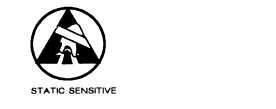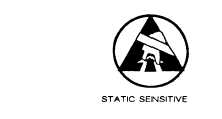|
| |
TM 11-5820-890-30-5
4-9.
OPERATIONAL CHECK. Continued
Step 6. INTERCOM AUDIO PATH CHECK FOR AM-7239/VRC AND AM-7239B/VRC.
Continued
Action
Response
c. Place RT in lower slot.
Set 28 V: ON.
Set CB1: ON.
Set RT FCTN:
TST.
Read RT display.
d. Set RT FCTN:
OFF.
Set CB1:
OFF.
Remove RT.
e. Install shorting bar, if testing an
AM-7239/VRC.
c. RT display reads “Good”. If not, the snap
line driver (5A3A2 or 5A3A1W3A2) is bad.
d. No response.
e. Operational Check is complete.
4-10. TROUBLESHOOTING.
Troubleshooting is done on a faulty mounting adapter. The steps to determine if a mounting adapter is faulty and
how to troubleshoot it are as follows:
a.
b.
c.
d.
e.
When a mounting adapter is received from unit maintenance, inspect it for damage. Repair any
damage before proceeding with testing. See section IV or V if repairs are necessary.
Verify the symptom. Perform the operational check found in paragraph 4-9. This will direct you to the
correct troubleshooting flowchart or identify the fault.
Troubleshoot the mounting adapter using the flowchart. It will identify the defective module or
component.
Replace the defective module or component. Follow the procedures in section IV or V.
Verify the repair. Repeat the operational check in paragraph 4-9 that failed. If it passes, then continue
with the rest of the operational check. When the operational check is passed, the mounting adapter
can be returned for use.
4-11. TEST PRECAUTIONS AND NOTES.
CAUTION
Static electricity and stray voltages can damage the mounting adapter. Use an antistatic pad on
the work surface and wear a grounded wrist strap when troubleshooting.
All circuit card assemblies in the mounting adapter contain static sensitive devices susceptible to
electrostatic damage. DO NOT attempt to replace components without using protective
devices.
4-13
|


